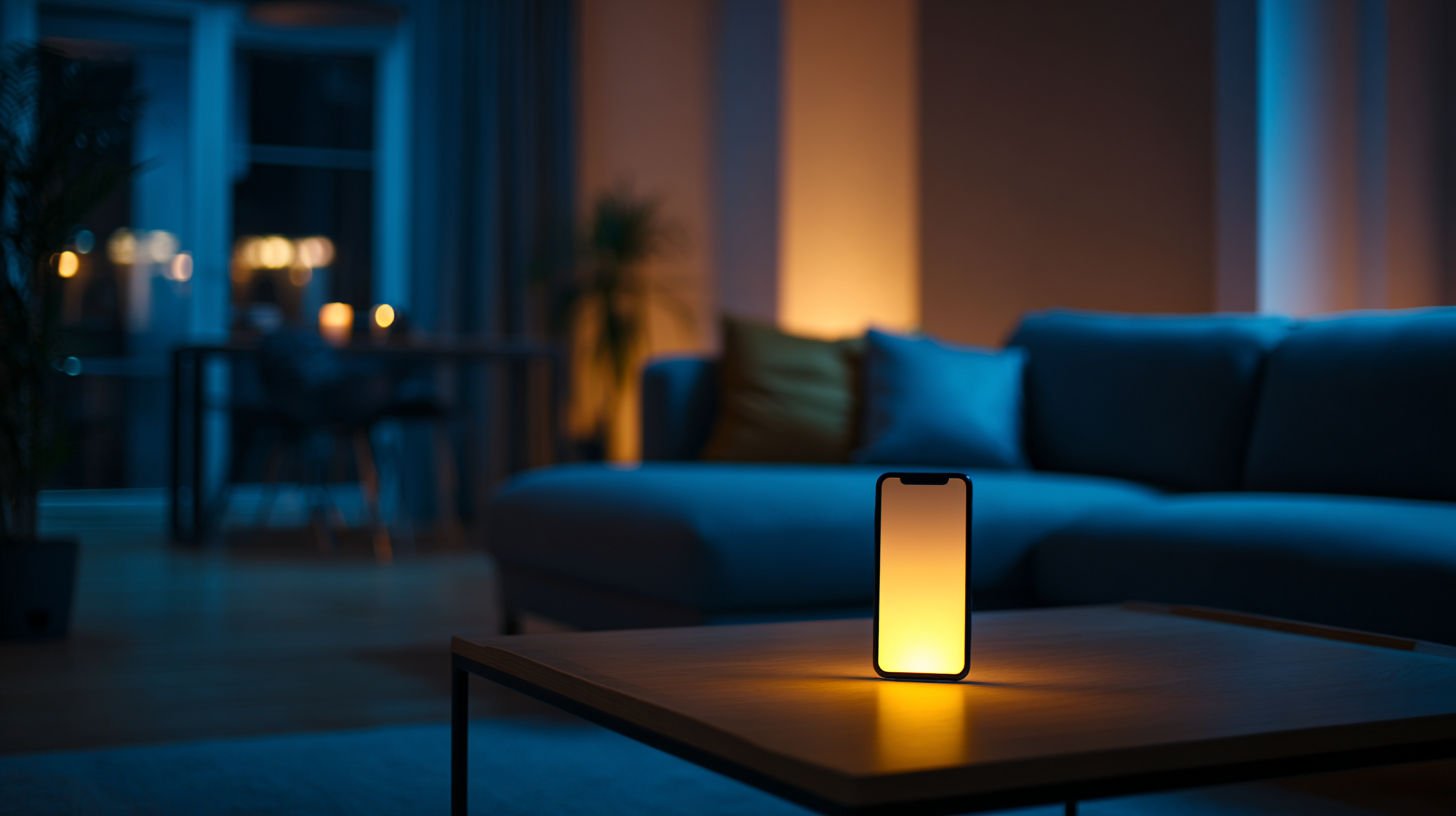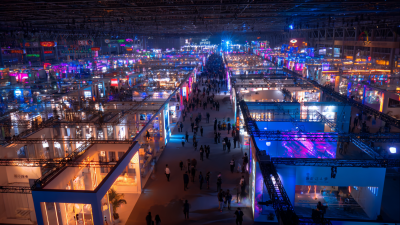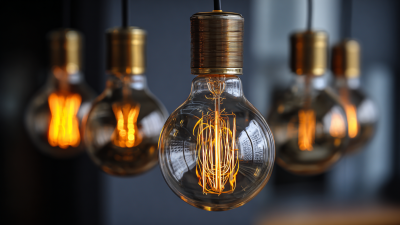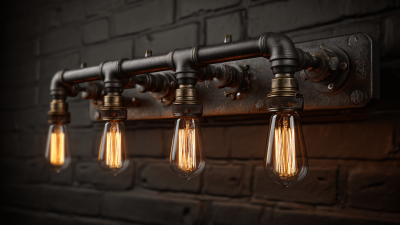As the demand for smarter homes continues to rise, the lighting industry is undergoing a transformative evolution, with smart lighting solutions at the forefront. According to a recent report by Markets and Markets, the smart lighting market is expected to grow from USD 10.4 billion in 2020 to USD 30.6 billion by 2026, showcasing a compound annual growth rate (CAGR) of 19.9%. This surge emphasizes the necessity for homeowners to not only adopt innovative lighting solutions but also understand how to effectively enhance their home ambiance through them.

A dedicated lighting website can serve as an invaluable resource, providing insights and recommendations on smart lighting technologies, configurations, and design aesthetics that can elevate any living space. As consumers become more conscious of energy efficiency and the emotional impact of lighting, integrating smart lighting into homes presents a unique opportunity to create personalized environments that cater to both functionality and style.
 Smart lighting solutions are revolutionizing the way we perceive and interact with our living spaces. By seamlessly integrating technology into illumination, homeowners can create a dynamically atmosphere that adjusts to their needs and moods. Whether it’s a warm glow for a cozy evening or vibrant colors for a lively gathering, smart lighting allows for a level of personalization previously unimaginable. Through apps and smart home systems, users can easily manipulate brightness, color, and timing, transforming an ordinary room into an inviting retreat or an energizing workspace.
Smart lighting solutions are revolutionizing the way we perceive and interact with our living spaces. By seamlessly integrating technology into illumination, homeowners can create a dynamically atmosphere that adjusts to their needs and moods. Whether it’s a warm glow for a cozy evening or vibrant colors for a lively gathering, smart lighting allows for a level of personalization previously unimaginable. Through apps and smart home systems, users can easily manipulate brightness, color, and timing, transforming an ordinary room into an inviting retreat or an energizing workspace.
Moreover, the potential of smart lighting extends beyond aesthetic appeal; it promotes energy efficiency and sustainability. Automated systems can optimize energy use by adjusting brightness based on natural light availability or guiding users to turn off lights in unoccupied areas. This not only reduces energy bills but also contributes to a greener environment. As technology advances, the integration of smart lighting into everyday life will continue to enhance our home atmospheres, making them more functional, beautiful, and eco-conscious.
The future of smart lighting is being shaped by several key technologies that enhance functionality and user experience. One prominent technology is the integration of IoT (Internet of Things) systems, which allows lighting fixtures to connect seamlessly with other smart devices in the home. This interconnectivity enables homeowners to control their lighting remotely via smartphones, tablets, or voice commands, creating a more convenient and personalized ambiance tailored to individual preferences and activities.
Another critical technology driving smart lighting is the advancement in LED technology. LEDs are now more energy-efficient, longer-lasting, and capable of emitting a wider range of colors and brightness levels. This evolution not only contributes to significant energy savings but also allows for dynamic lighting solutions that can adjust throughout the day and night, promoting well-being and enhancing mood. Coupled with adaptive systems that learn user habits, smart lighting is evolving into an intuitive solution that transforms any living space into an optimal environment for relaxation or productivity.
Smart lighting technology has transformed the way we interact with our living spaces, allowing for personalized ambiance and energy efficiency. According to a report from MarketsandMarkets, the smart lighting market is projected to reach $75 billion by 2025, reflecting the growing consumer interest in intelligent home solutions. One of the most creative ways to integrate smart lighting is in the living room, where adjustable color temperatures can enhance relaxation or energize gatherings. By using smart bulbs that can be controlled via smartphone apps, homeowners can seamlessly transition from a warm, cozy glow for movie nights to vibrant colors for entertaining guests.
In the kitchen, smart lighting can not only elevate aesthetics but also improve functionality. The American Lighting Association suggests that well-lit kitchens contribute to safer and more efficient cooking environments. Installing under-cabinet smart LED strips allows homeowners to illuminate work surfaces while also providing the option to adjust brightness based on different tasks. Furthermore, in bedrooms, utilizing smart lighting systems that can simulate natural sunlight in the morning can improve sleep cycles, promoting overall well-being. With these innovative applications, it’s clear that smart lighting offers versatile solutions, enhancing both the atmosphere and utility of every room in the home.
When selecting smart bulbs and fixtures for your home, it's essential to consider both your specific needs and the ambiance you wish to create. Start by evaluating the areas you want to enhance. For instance, warm white bulbs work beautifully in living spaces to create a cozy atmosphere, while cooler white or even colored lights can invigorate kitchens or home offices. Additionally, ensure the smart bulbs you choose are compatible with your existing smart home system, whether it’s Apple HomeKit, Google Home, or Amazon Alexa.
Next, pay attention to features that will enhance your experience. Dimmability is a crucial aspect as it allows you to adjust the brightness to suit various activities, from relaxing evenings to vibrant gatherings. Color-changing capabilities can also add versatility, letting you customize the mood according to the occasion. Furthermore, consider smart fixtures that come with built-in sensors for automated adjustments based on the time of day or occupancy. By thoughtfully choosing smart bulbs and fixtures, you can significantly elevate your home's ambiance and create a more enjoyable living environment.
Smart lighting has revolutionized how we interact with our living spaces, offering an unparalleled blend of mood and functionality. By integrating smart lighting controls into your home, you can easily curate the ambiance to suit any occasion. Whether you're hosting a dinner party or winding down after a hectic day, the ability to adjust brightness and color through a simple app or voice command allows for a personalized environment that enhances your mood and well-being.

Moreover, smart lighting systems can be linked to various home automation features, creating a seamless integration with your lifestyle. For instance, you can program your lights to gradually brighten in the morning, simulating a natural sunrise, which helps regulate your circadian rhythm. Conversely, scheduling softer, warmer tones in the evening can signal your body to relax and prepare for sleep. The versatility of smart lighting not only contributes to an aesthetically pleasing space but also elevates the functionality of your home, making daily activities more enjoyable and efficient.





